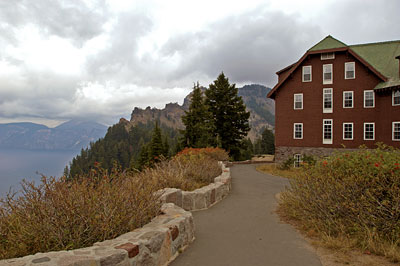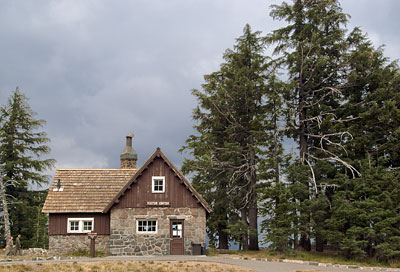National Register of Historic Places in Klamath County
Rim Village Historic District
Rim Village Road
Crater Lake National Park
Situated on the southern edge of a caldera partly filled by Crater Lake, the district averages 7,100 feet in elevation and is primarily linear, in that it closely follows the rim for just under one half mile.
Rim Village is centered around a paved road which runs east from a junction with the West Rim Drive to its terminus in front of Crater Lake Lodge. The associated landscape is a mixture of highly designed and developed areas, along with less disturbed indigenous forest consisting of Mountain hemlock (Tsuga mertensiana), and Shasta red fir (Abiesmagnified var. shastensis). Naturalistic in appearance, the district's structures and landscape features clearly reflect National Park Service master plans of the 1930s which emphasized overall visual consistency and subordination to the surroundings.
Extensive use of stone masonry is a unifying characteristic within Rim Village, much as it is in the Munson Valley Historic District, but historic plantings consisting of native vegetation and defined circulation systems are more extensive.
In functional terms, Rim Village remains the focal point for visitor services at Crater Lake National Park. Food service, hiking trails, interpretive programs, strolling on the promenade, and enjoying views of the lake provide visitors with both passive and active opportunities for education and recreation. No other site in the park provides such a diversity of uses in one place.
Adapted from the NRHP Nomination Form.

